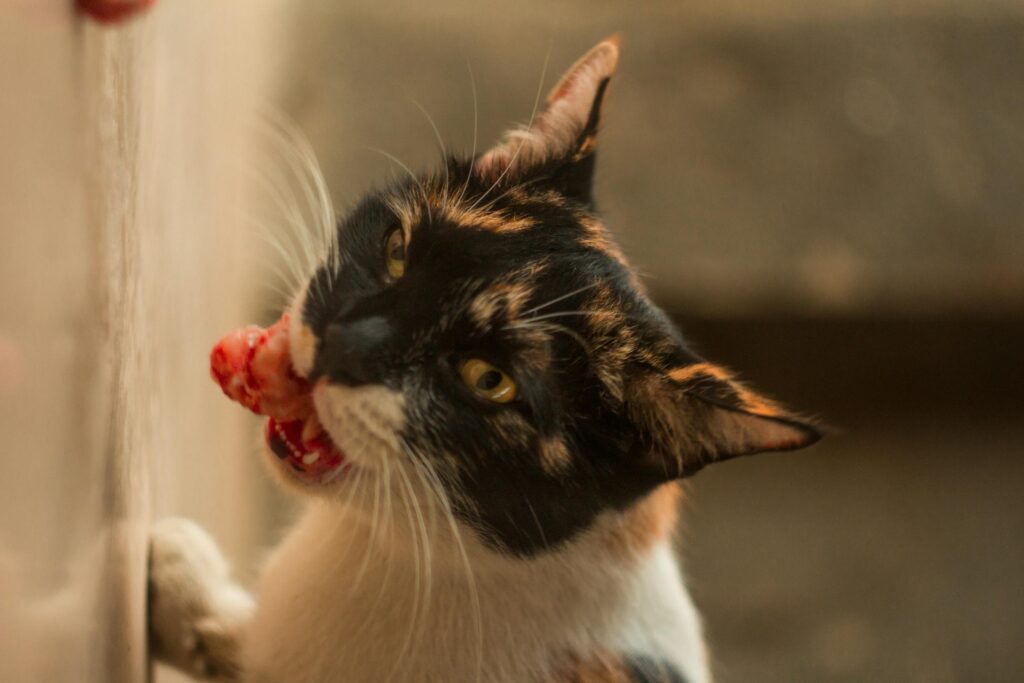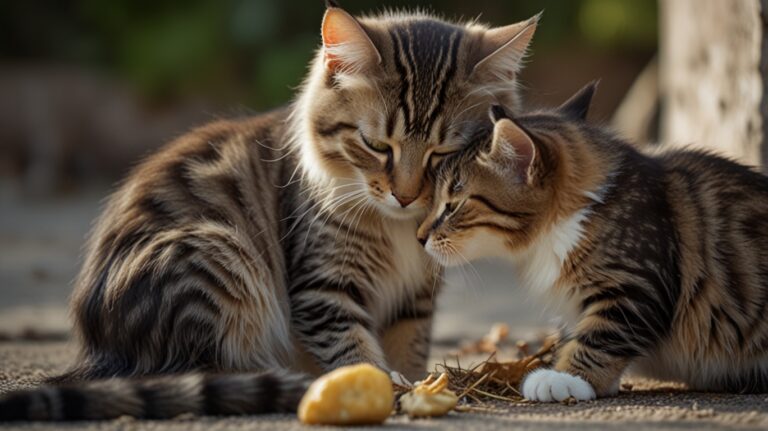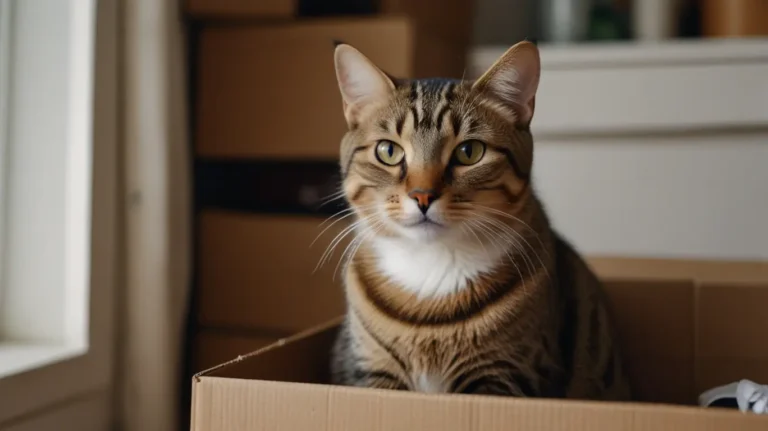Can Bird Flu Harm Your Cat? Important Warnings for Pet Parents!
Is your cat at risk of contracting bird flu? As avian influenza (H5N1) spreads among bird populations, questions arise about the safety of our feline friends. Can cats catch bird flu, and if so, how can we recognize and prevent it?
Understanding the risks, symptoms, and treatment options can be vital in keeping your pet safe.
What is Bird Flu in Cats?
Avian influenza (H5N1), sometimes referred to as bird flu, is a virus that mainly infects birds but has also occasionally spread to mammals, including cats.
In addition to being extremely contagious among bird populations, the virus can occasionally endanger other creatures.
Although it is uncommon, cats can get bird flu from polluted habitats or infected birds, so pet owners must be mindful of this.
Key Takeaways
- Risk of Infection: While bird flu predominantly affects birds, cats can contract it through direct exposure.
- Symptoms to Watch: Respiratory issues, lethargy, and appetite loss are common signs in infected cats.
- Transmission Sources: Cats may get bird flu from eating or encountering infected birds.
- Treatment and Care: Early veterinary intervention is essential to support recovery in infected cats.
- Preventive Measures: Minimizing exposure to wild birds is key to protecting cats from bird flu.
How Do Cats Get Bird Flu?
The main way that cats can get bird flu is by interacting with contaminated objects or diseased birds. Avian influenza (H5N1) is naturally spread by wild birds, particularly ducks, which can spread the virus through their excrement, nasal secretions, and saliva.
Cats run the danger of contracting the virus if they encounter or consume an infected bird. Particularly at risk are outdoor cats that hunt birds or come into contact with contaminated droppings.
Indirect transmission through virus-contaminated surfaces is another possibility, albeit it is less frequent. If there are bird flu outbreaks in their area, pet owners should exercise caution since their dogs may be at higher risk if they are close to infectious birds.
Symptoms of Bird Flu in Cats
Symptoms of bird flu in cats can resemble typical respiratory illnesses but may be more severe. Cats infected with bird flu may experience coughing, sneezing, and breathing difficulties.
Additional symptoms can include fever, lethargy, decreased appetite, and even discharge from the nose or eyes. These signs may initially resemble cat flu, but bird flu can progress rapidly, affecting the cat’s overall health.
Since bird flu can be serious in cats, it’s important to seek veterinary care immediately if you notice any combination of these symptoms, especially if your cat has been exposed to birds recently.
Can Cats Get Bird Flu from Eating Birds?
Indeed, eating infected birds can expose cats to bird flu. Outdoor cats with a strong hunting instinct should be especially concerned about this mode of transmission.

The virus can infect a cat’s body through bodily fluids or tissues when it consumes or simply plays with an infected bird. Keep your cat indoors or limit its outdoor access to lower the risk, particularly in regions where avian flu outbreaks are occurring.
See also Cat Food Recipe Ideas – Healthy Meals You Can Make at Home!
Make sure there are no items in your cat’s eating area that could come into contact with diseased birds because consuming tainted food or water is another possible concern.
Bird Flu in Cats Treatment
The treatment for bird flu in cats focuses on providing supportive care to help the animal recover and manage its symptoms.
There is currently no specific antiviral treatment approved for bird flu in cats, therefore veterinarian care consists primarily of hydration, nutritional supplementation, and drugs to treat symptoms like as fever and respiratory difficulties.
In severe circumstances, hospitalization may be required. If you suspect avian flu, contact your veterinarian as soon as possible for an accurate diagnosis and treatment plan. Prompt action can significantly improve the cat’s recovery and overall prognosis.
Prevention from Bird Flu
Preventing bird flu in cats largely involves minimizing their exposure to infected birds and environments. Keep cats indoors, especially during avian flu outbreaks, as this limits their chances of interacting with wild birds.
Avoid feeding cats raw poultry or other uncooked bird products that could be contaminated with the virus. It’s also important to monitor local advisories about bird flu outbreaks and avoid taking your cat to areas with a high risk of exposure.
See also Sweet Potatoes and Cats – A Safe Combination or Risky Treat?
Regular cleaning and disinfecting areas where your cat spends time can further reduce the risk of transmission.
Can Cats Die from Bird Flu?
In severe circumstances, avian flu can be lethal to cats. While some cats may recover with supportive treatment, others may undergo fast deterioration due to respiratory failure or virus-related problems.
If the infection is not recognized and treated as soon as possible, the risk of mortality increases. Given the potential severity, if a cat exhibits bird flu symptoms, it must receive quick veterinarian assistance.
Understanding the gravity of avian flu in cats can help pet owners take preemptive steps to limit the chance of infection and safeguard their animals.
Final Thoughts
Bird flu in cats, while rare, is a concern for pet owners, especially those with outdoor cats. Recognizing the symptoms and understanding transmission methods can help protect your feline friend.
By following preventive measures, staying informed about local outbreaks, and seeking prompt veterinary care if symptoms arise, you can reduce the risk of bird flu for your cat.
See also Is Peanut Butter Safe for Cats? The Full Breakdown!
Although the risk remains low, preparedness is key to safeguarding your pet’s health and well-being.
Bird Flu in Cats FAQs
Can cats get bird flu?
Yes, cats can contract bird flu, primarily through contact with infected birds or their secretions.
What are the symptoms of bird flu in cats?
Symptoms include coughing, sneezing, lethargy, fever, and loss of appetite.
What states are affected by the bird flu in cats?
Outbreaks vary by location; refer to local health advisories for updates.
What are the signs of cat flu?
Common signs are sneezing, coughing, nasal discharge, and fever.
Are indoor pet cats getting infected with bird flu?
It’s rare, but possible if they come into contact with contaminated surfaces or materials.
How do I protect my cat from bird flu?
Keep your cat indoors and avoid exposure to wild birds and contaminated areas.
How do indoor cats get flu?
Indoor cats can get flu from exposure to contaminated items, people, or pets bringing the virus indoors.







